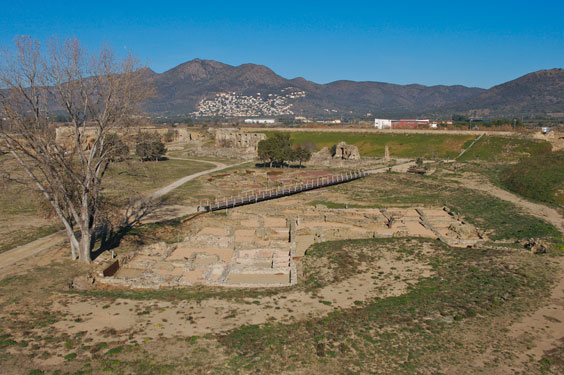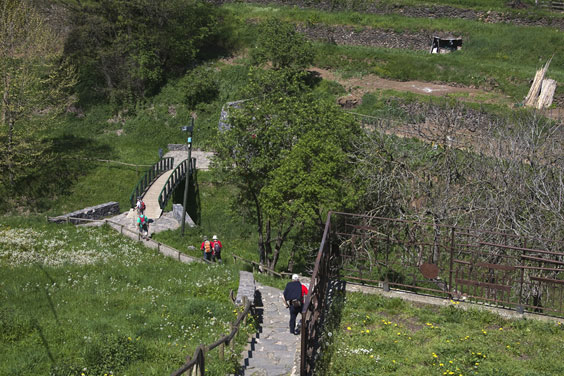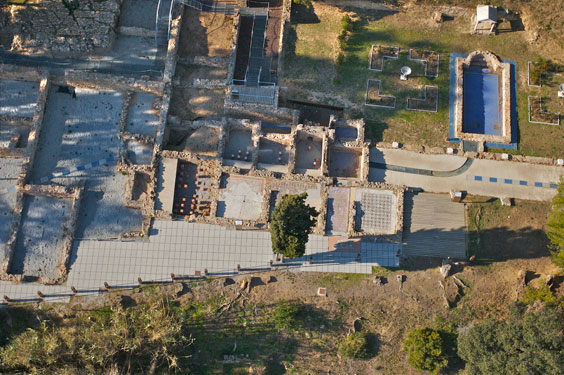The Heritagisation of Archaeology.
The patrimonialization of archaeology
Program
R&D&I Project of the Ministry of Science and Innovation (HAR2008-00-00132)(2008-2011)
Researchers: Dr. Gabriel Alcalde (IP) (ICRPC/UdG), Dr. Xavier Aquilué (MAC-Empúries), Dr. Josep Burch (ICRPC/UdG), Dr. Dayan Castañeda (UdG), Dr. Roser Juanola (ICRPC/UdG), Enric Martí (ICRPC), Antoni Rojas (ICRPC), Dr Joaquim Tremoleda (MAC-Empúries), Mireia Tresserres (UdG)
Description
The main objective of this project is to investigate the different concepts and uses of archaeological heritage that coexist today. At a time when the use of archaeological heritage is experiencing a spectacular increase, it is absolutely essential to have a scientific basis that allows an in-depth analysis of the phenomenon, that makes it possible to provide knowledge on this aspect and that, at the same time, can constitute the basis for future heritage interventions.
The purpose of this project is to develop proposals and methods that allow us to understand and study the uses of archaeological heritage, the aim is to deepen the knowledge we have about the processes of patrimonialization of materials from the past, whether their museumization and conservation or the different dissemination processes that have been carried out.
Objectives
To determine the factors that converge in the processes of patrimonialization of material remains from the past.
To determine the processes of social identification with archaeological heritage.
To determine the uses of archaeological heritage based on a typology of diversified cases.
To determine the characteristics of the valorization of archaeological materiality.
To deepen the analysis of the mechanisms of conceptualization and use of archaeological heritage in contemporary societies.
To provide educational resources and strategies that enhance the interpretation, communication and learning of archaeological heritage and generate synergies for greater social inclusion.
To contribute to the development of local communities through archaeological heritage as an element of social cohesion and cultural promotion

Methodology and work plan
1
When archaeological heritage is used in territories where it constitutes one of the main elements of identification of its inhabitants and, in addition, this relationship has a long history.
To work on this point, the case of the Greco-Roman colony of Empúries (L’Escala, Girona) is used. The uniqueness of this point lies in being the only archaeological site in the Iberian Peninsula where the remains of a Greek city (Emporion) and a Roman city (Emporiae) are combined, and therefore constitutes a basic point of reference for understanding the legacy of classical civilizations in our culture. Today, Empúries is one of the most visited museums and archaeological sites in Catalonia.
2
When archaeological heritage is used in territories where heritage valorization is based on other types of elements.
For this analysis, work is carried out based on the study of the use and conceptualization of archaeological heritage in protected natural spaces in which archaeological heritage is little known and used. Specifically, two adjacent protected spaces for public use, but with different characteristics, are analyzed: the Natural Park of the Volcanic Zone of La Garrotxa (Girona) is a space in which archaeological research has had a special boost in the last decade; in this area, the sustainability of the use of archaeological heritage generated by archaeological research as an offer aimed at visitors from abroad is studied. The second space analyzed is the Area of ??Natural Interest of Alta Garrotxa (Girona). This area, which has been studied from an archaeological point of view since the early 1980s, is used as a study space to analyze the relationship between the community that lives in the territory and its archaeological heritage.
3
When the use of archaeological heritage constitutes a tourist resource in particular.
To analyze this situation, we work specifically on the Costa Brava, a territory that constitutes a universally known tourist destination. In this area there are important archaeological sites (for example Empúries, Ullastret, Roses, or the Roman villa of Els Ametllers in Tossa de Mar) that promote tourism, but which are also incorporated into the tourist products and the offer of the different towns in the area, as well as the numerous archaeological elements with different degrees of intervention (museum sites, routes, interpretation centers, museums, etc.).
4
When the valorization of archaeological heritage occurs recently.
Of particular interest for this project is the study of the relationship between archaeological heritage and society in a situation in which the process of heritage activation is in full swing. To analyze this type of relationship, we turn to a specific case of the archaeological heritage of the Girona region, the archaeological site of Sant Julià de Ramis, excavated by a team from the University of Girona in collaboration with the City Council of this municipality since 1996 and partly museumized in 2007.

Gabriel Alcalde (ICRPC/UdG)
Xavier Aquilué (MAC-Empúries)
Josep Burch (ICRPC/UdG)
Dayan Castañeda (UdG)
Roser Juanola (ICRPC/UdG)
Enric Martí (ICRPC)
Antoni Rojas (ICRPC)
Joaquim Tremoleda (MAC-Empúries)
Mireia Tresserres (UdG)





Institut Català de Recerca en
Patrimoni Cultural ICRPC
observatoridepublics@icrpc.cat
Tel. 972 486 158



- Sitemap
- |
- Legal Notice
- |
- Cookies usage
- |
- Privacy policy
- |
- Contact
- |










